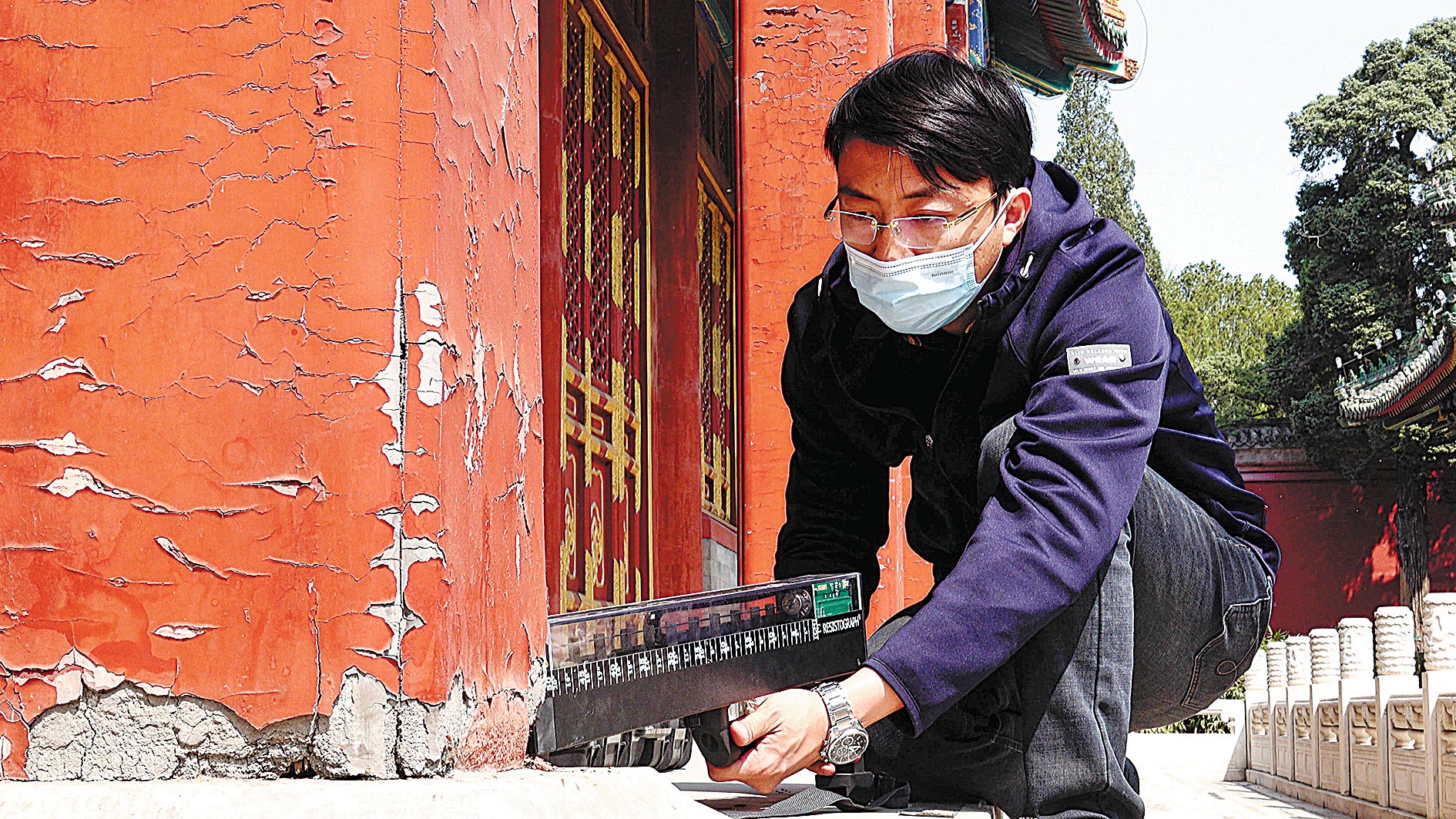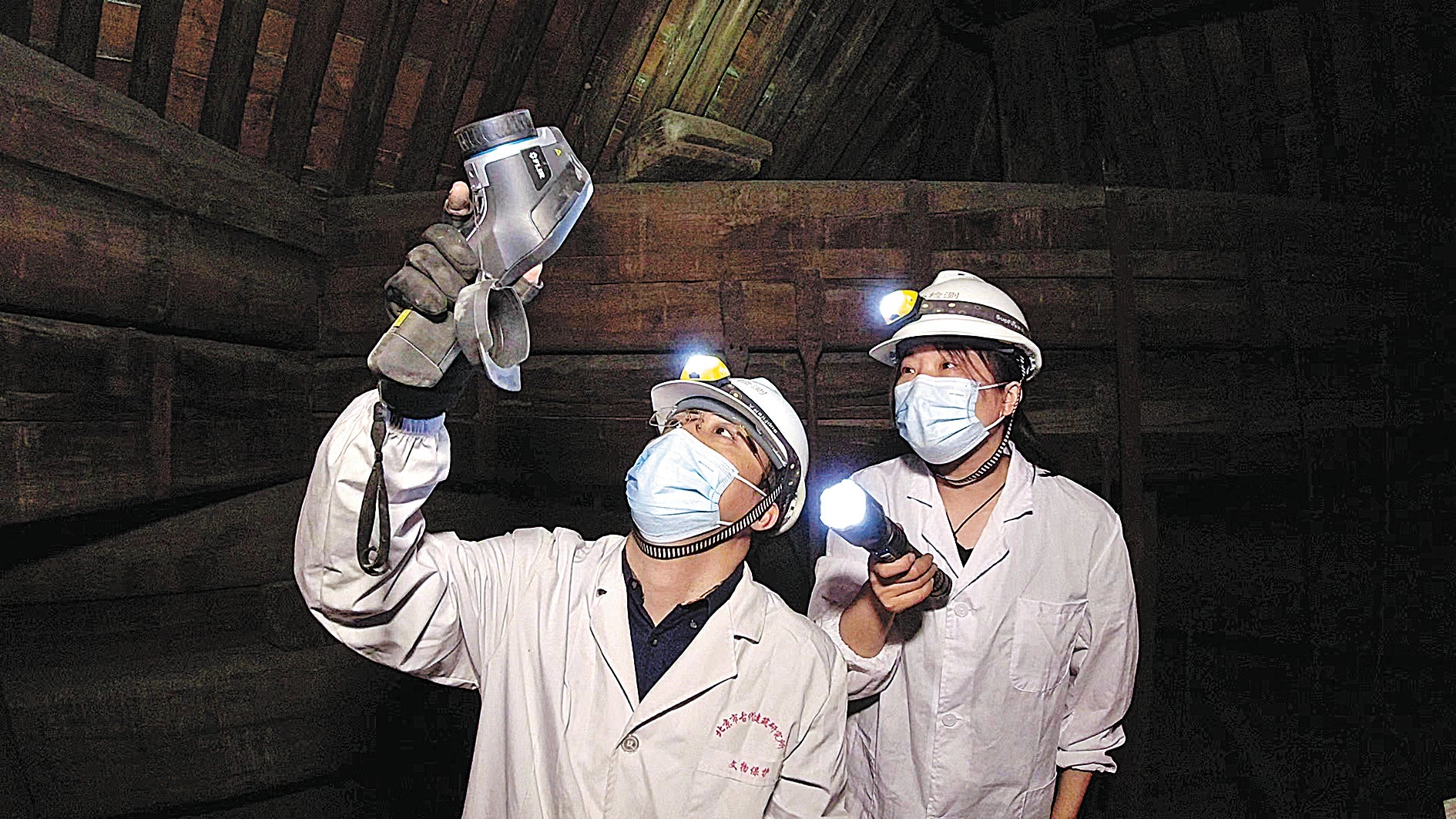The wood whisperer
THE ARTICLES ON THESE PAGES ARE PRODUCED BY CHINA DAILY, WHICH TAKES SOLE RESPONSIBILITY FOR THE CONTENTS

Zhang Tao attracts unwanted attention at work every now and then. As he stands in front of historical buildings in Beijing, armed with a sophisticated drilling tool that may look like a weapon to untrained eyes, his seemingly public vandalism is interrupted and questioned by well-intentioned passers-by.
“I am actually using a micro-drilling impedance analyser, which helps me test the health of a building,” the 39-year-old restorer tells concerned onlookers. “It is like drawing blood (from old structures) for tests. This tool is used abroad to determine the growth of trees.”
Most historical buildings in the city are made of wood, and Zhang and his team are entrusted with their restoration. With the misunderstandings quickly cleared up, Zhang gets down to examining the buildings, determined to preserve what is left, a job to which he has been dedicated since 2005.
A few light taps on a pillar with his small hammer and Zhang can diagnose if something is wrong inside the woodwork. He zooms in with the impedance analyser to detect decay and cavities in the timber. The technology, largely used by arborists or tree surgeons, can tell stages of rot and identify hollow areas and cracks.
As the micro-drill bores into the wood, the resistance of the timber changes the needle’s rotation and speed. These variations are translated into a graph, which looks a lot like an electrocardiogram printout.
“The detective needle offers a glimpse inside the woodwork. The needle is the size of natural cracks and does not cause damage,” Zhang says.
“Maintenance techniques followed by our predecessors are passed on and inherited, and modern technology can help us pinpoint problems in these historical structures,” he says. “Many of these buildings are more than 400 years old. They look sturdy on the outside, but may be decaying inside. If they collapse someday it will be a great loss for all of us.”
One of his most memorable experiences, he says, was detecting a 20in area of rot at the bottom of a pillar at the Yonghegong Lama Temple in Beijing. “I was so glad I found it in the nick of time,” he says.
Zhang has been working at an archaeological institute under the auspices of the Beijing Cultural Heritage Bureau since graduation. The job has made him a regular at major historical sites across the capital, including the Temple of Heaven and Beihai Park. He is among the handful of protectors of several ancient structures in Beijing, which has more than 3,800 immovable sites boasting a history of more than 3,000 years.
Zhang grew up in a neighbourhood next to the Temple of Heaven and is familiar with the grand architecture. “The imperial complex of buildings is indeed magnificent, and I get to see it every day.”
He obtained a master’s degree in materials science and engineering from Beijing University of Chemical Technology. With time, Zhang became increasingly aware of the importance of testing and diagnosis.

“It is like the first step in a hospital, also the most important one, before the course of medication can be determined and administered,” he says.
By 2008 Zhang had started focusing his attention on preventive tests for historical buildings, especially those made of wood.
Today he heads the scientific protection division of the Beijing archaeology institute. Along with his team, he has developed five national patents for preventive testing and restoration of historical buildings. They comply with industrial standards.
Zhang says he has seen significant development of preventive testing methods across China over the past six years, with many science graduates joining the field. It is necessary to acquire interdisciplinary knowledge for the job, including the architectural styles of various historical periods. It is about knowing more than just chemistry and physics, he says.
Previously published on Chinadaily.com.cn
